How To Repair/refurbish A Plastic Guitar Nut
Later on replacing or upgrading a nut, terminate the chore with fast-acting cyanoacrylate adhesive.
In my previous column ("Using Super Mucilage in Guitar Repair"), we explored techniques for using fast-interim adhesive to seat frets and secure a string nut. We're not quite done with this topic, only earlier nosotros put super gum to piece of work on another projection, please have a moment to review the prophylactic tips I outlined last time around. As I mentioned earlier, super glue can be your best friend or worst enemy, and so before you get-go slinging the cyano, it's of import to refresh your memory of these crucial dos and don'ts. Right? Thought and then.
String nut touch-upwardly.
Super glue is handy for making small repairs to a guitar'south finish. Here'due south an example: About guitars accept a little terminate at either end of the string nut to create a smooth transition between the edge of the fretboard or binding and the nut itself. Merely after replacing the string nut—let'southward say you've upgraded from a plastic nut to one made of bone—at that place's usually a small-scale border or drop off where the nut meets the fretboard (Photo 1). Every bit you may think from our prior column, super glue is available in a diverseness of thicknesses. To shine out the transition betwixt the nut and where it joins the fretboard, y'all can make full that expanse using a few drops of medium viscosity or gel-formula super gum.
Make sure the area effectually the border of the cord nut and bounden is absolutely level, because you don't want the glue to puddle on 1 side of the nut border and create more work for you later.
Just wait, there's more! It's common for the bounden on older guitars to turn xanthous over time. Stewart-MacDonald sells an amber-tinted formula that matches this anile expect nicely. (Stew-Mac also offers tinted super glues in white and blackness, which can come up in handy for other end touch-upward projects.) If your guitar has binding, using tinted medium super glue will attain two goals: You'll fill the edges effectually the ends of the replacement nut and help it blend in with the bounden.
Assume the position.
First, place the guitar on its side so the neck is horizontal to the workbench and 1 end of the nut faces upwardly, the other down. To prevent an electrical guitar or bass from tipping over, I utilize a quick release clench on the trunk to stabilize it. Because acoustics have a thicker body, they'll typically stay in identify without a clench. Balance the guitar on its tuner keys, not the cervix, and use books or small boxes to back up the guitar as information technology rests on it side. (In our store, we use leather bags filled with buckshot for this and other stabilizing tasks.)
Make sure the area effectually the edge of the string nut and binding is absolutely level, because yous don't desire the glue to pool on one side of the nut edge and create more work for you afterwards. A bubble judge comes in handy here.
Apply the glue.
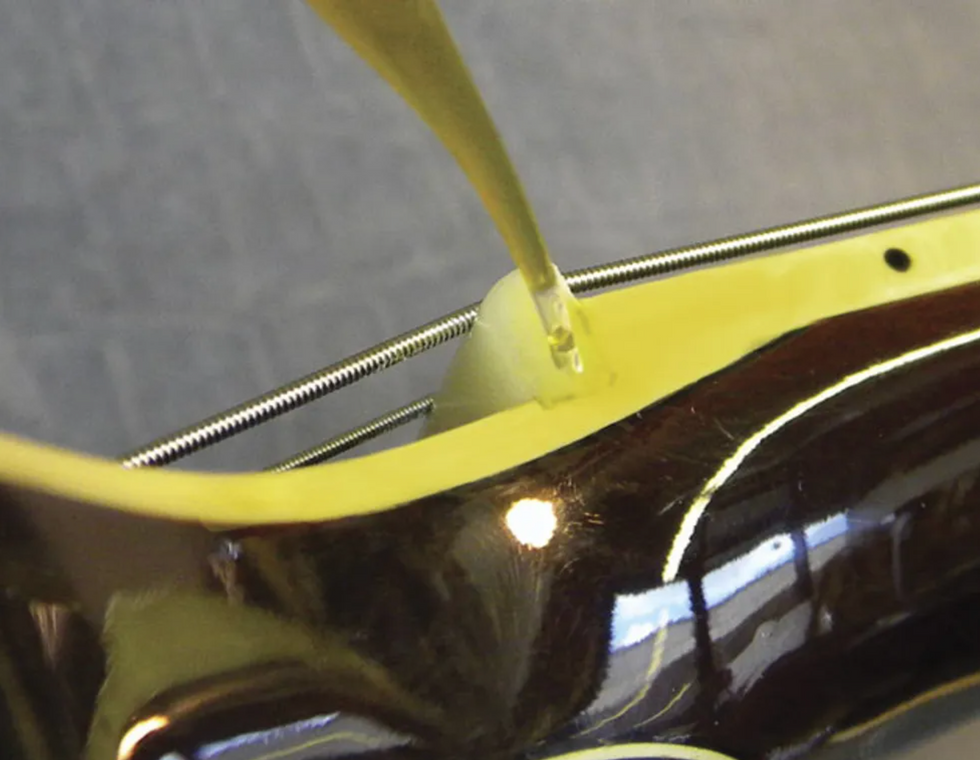
Photograph 2
This is where you lot don your condom glasses. Once the guitar is stable, put a few drops of super glue on the end of the nut and let it dry (Photo 2). Y'all but need to apply enough mucilage to encompass the side of the nut and binding to build a shine surface where they bring together together. A medium formula of gum, which is what we recommend, will take several minutes to dry. If you want to speed upward the drying process, you can spray super glue accelerant on it. We've used GluBoost and NCF Quick brands in our store, and they both work great.
Having a well-ventilated workspace will reduce accelerant fumes and minimize eye irritation. At the store, nosotros run a pocket-size fan to keep the air circulating when using super glues and accelerants.
Tip: Accelerants can cause what we phone call the "Swiss cheese effect." This happens when you prematurely spray the accelerant on the mucilage. Information technology causes a chemical reaction that results in the gum bubbling upwardly into a white foam, which forces yous to scrape away all the glue and kickoff over. To avoid this, wait several minutes before diggings the glue with an accelerator. A little patience volition save you a lot of time.
File information technology down.
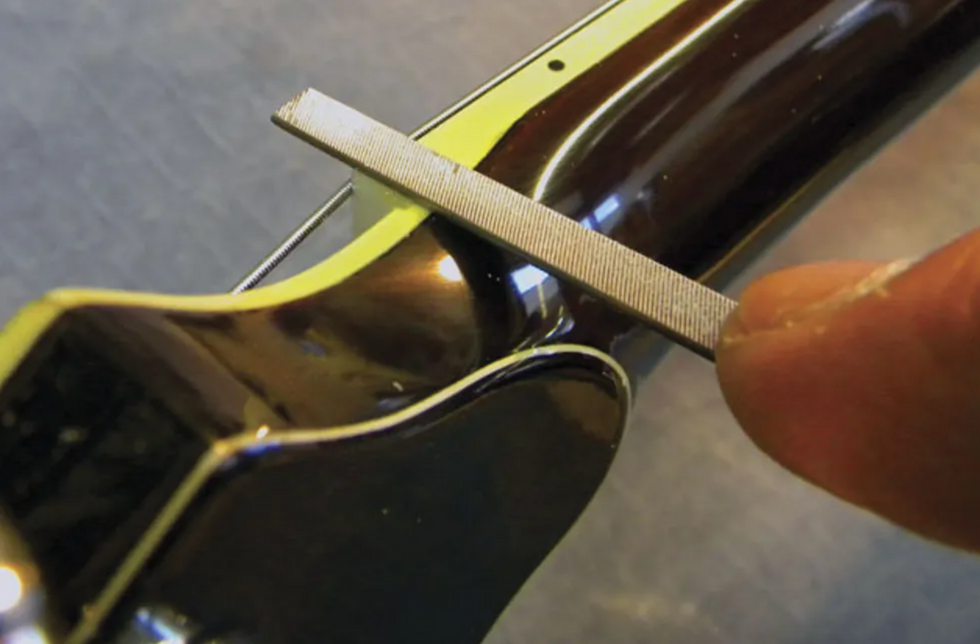
Photograph 3
When the gum is dry out, utilise a miniature file to gently file away any backlog (Photo 3). Do this carefully to avoid damaging the original finish around the nut and binding. The object of the exercise is to file the mucilage flush with the nut and binding without disturbing the surrounding surfaces.
Sand and buff.
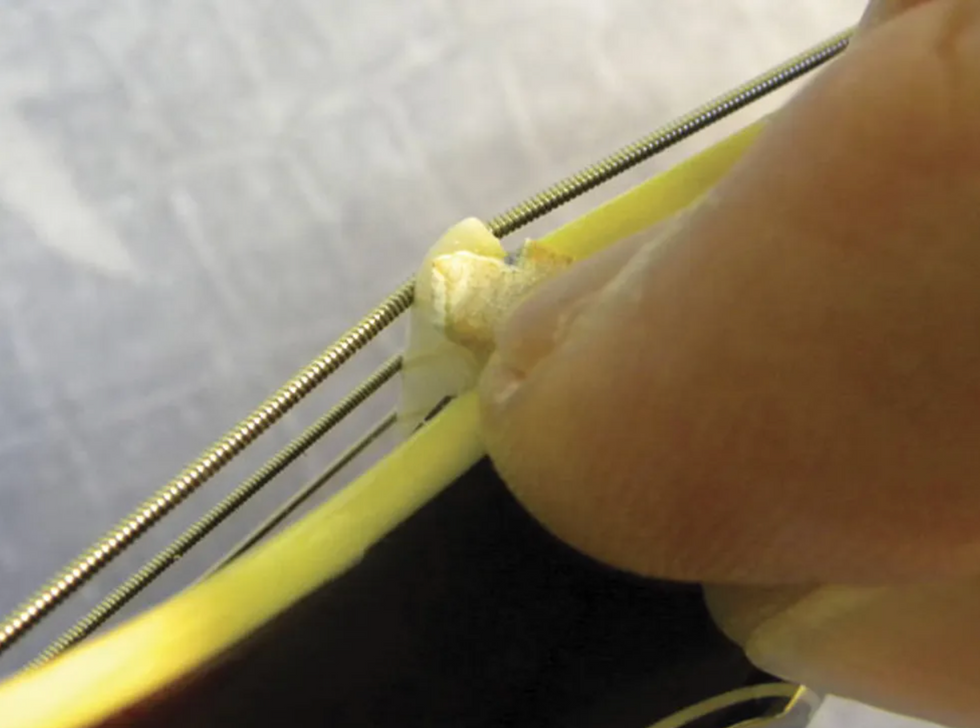
Photograph iv
Next, lightly sand the glue-covered area with 600 grit paper to feather it to the border of the fretboard or binding (Photo iv). Now gently sand it with 1500 grit paper to smoothen out any scratch marks.
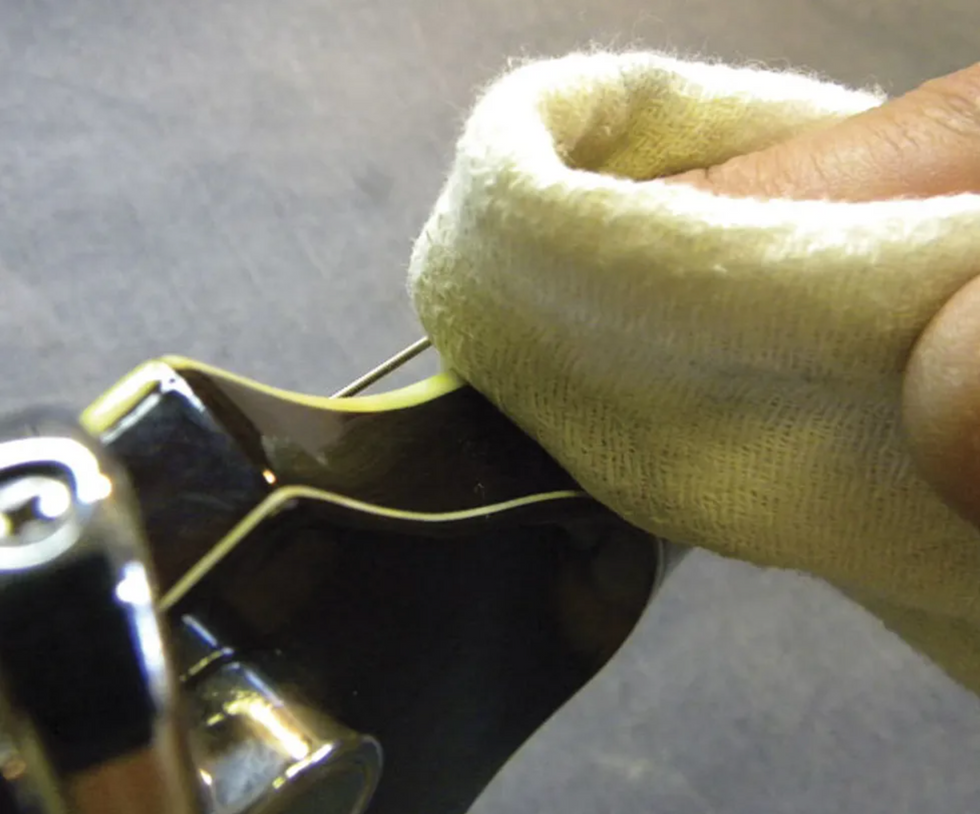
Photograph 5
Finish this job using actress-fine buffing compound and a polishing fabric (Photograph five). I use Planet Waves Restore for this last phase, merely you can discover other buffing compounds at auto stores or online.
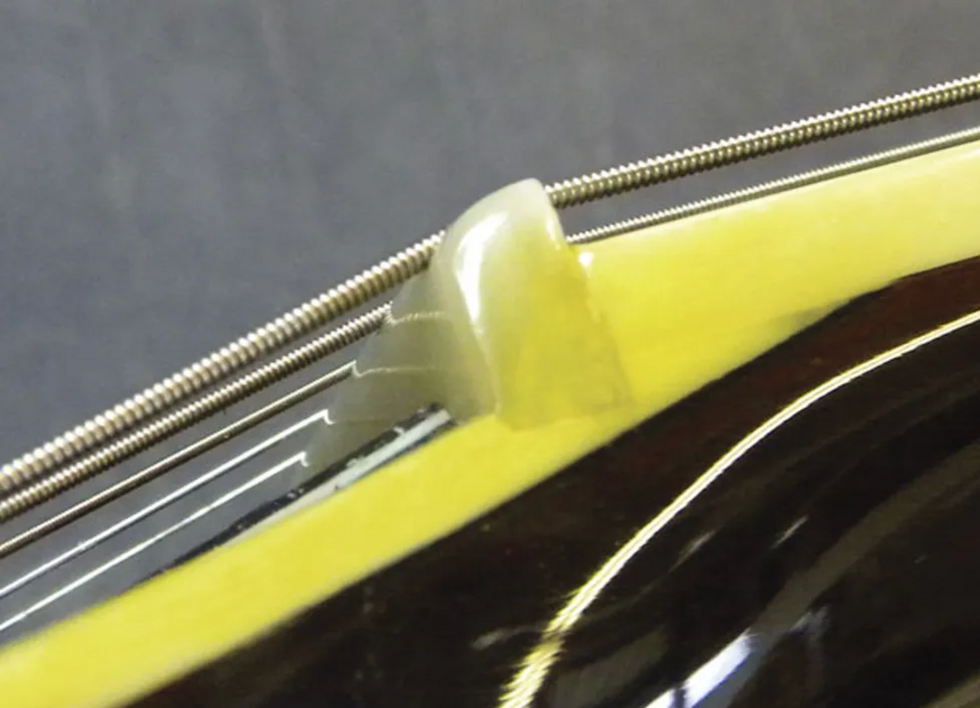
Photo 6
Now step back and admire your work, which should look similar to Photo 6.
After flipping the guitar over on its opposite side, position and secure it (call up to go along the neck perfectly level), and then repeat the process for the other finish of the nut.
And that'southward information technology—another task completed, thanks to super glue.
[Updated one/20/22]
Source: https://www.premierguitar.com/diy/guitar-shop-101/glue-for-guitar-nut
Posted by: gilleygiathe92.blogspot.com


0 Response to "How To Repair/refurbish A Plastic Guitar Nut"
Post a Comment